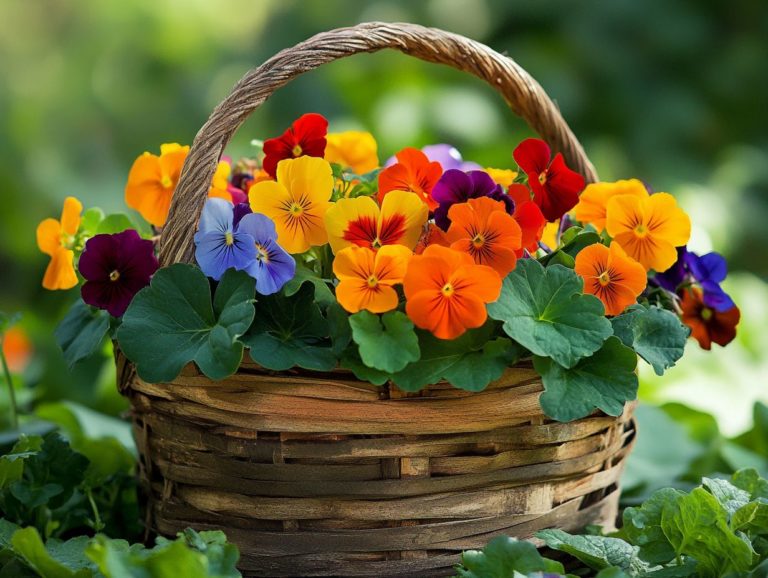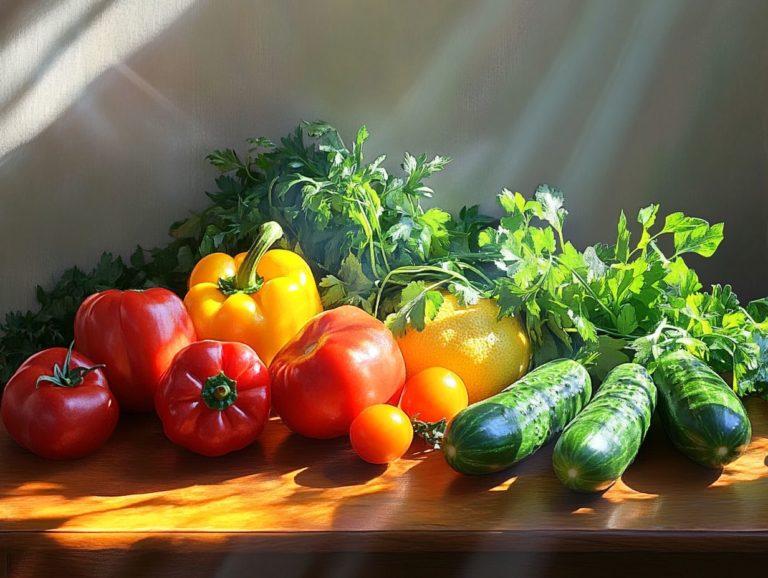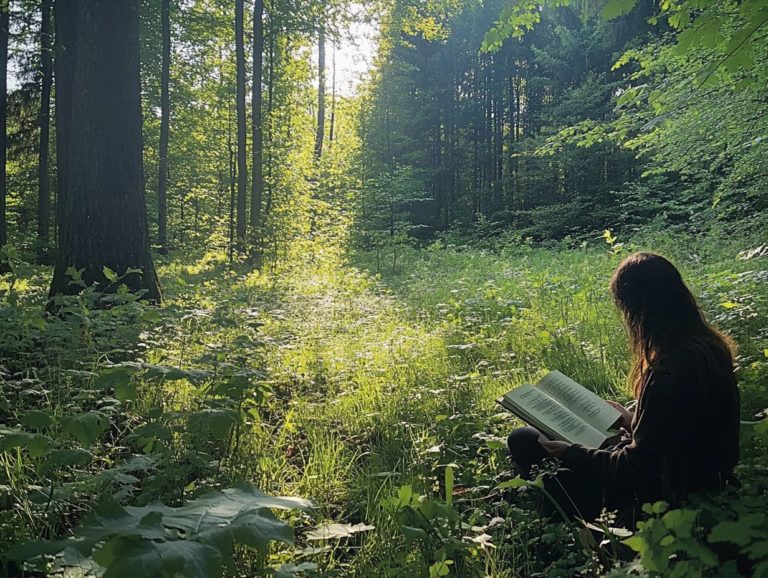Seasonal Foraging: Connecting with Nature and Community
Seasonal foraging transcends mere gathering of wild edibles. It offers you a profound opportunity to connect with nature, enhance your health, and engage meaningfully with your community.
This exploration delves into the essence and purpose of seasonal foraging. It sheds light on its myriad benefits for both body and mind. You ll discover how to identify edible plants with confidence, prioritize your safety, and even take part in community foraging events that foster connection and learning.
You will also find delicious recipes designed to help you seamlessly integrate these foraged treasures into your meals. Get ready to dive into the exciting world of seasonal foraging!
Contents
Key Takeaways:
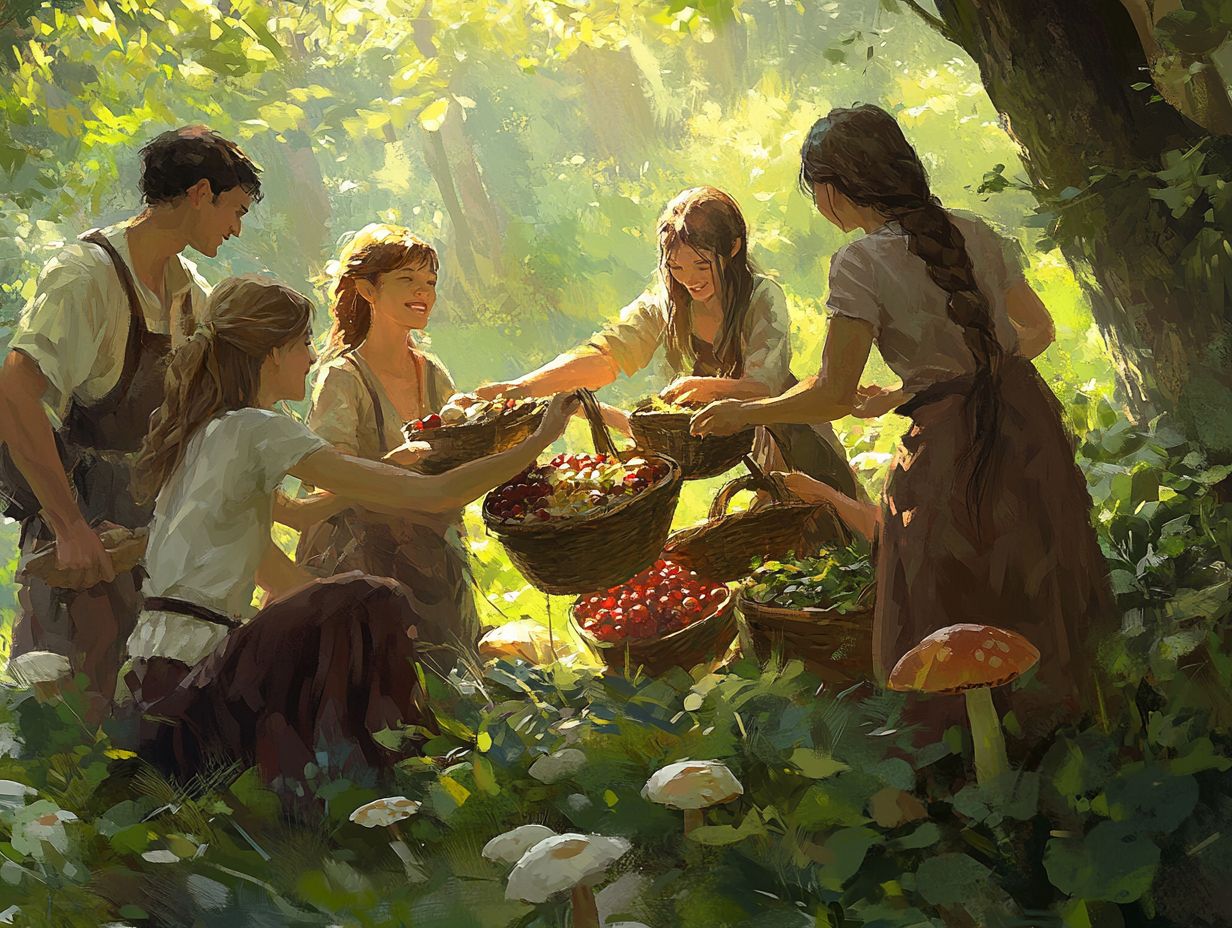
- Explore the world of seasonal foraging to connect with nature and your community.
- Enjoy the physical and mental health benefits of foraging while supporting the environment.
- Join community foraging events to learn and enjoy tasty foraged foods!
What is Seasonal Foraging?
Seasonal foraging invites you to gather wild edible foods that flourish at specific times of the year. This practice enables you to engage intimately with the local flora while learning about protecting edibles and ecosystems.
It also enriches ecological health by cultivating an appreciation for biodiversity, which is the variety of different plants and animals. As you embark on this foraging journey, you ll explore new cooking ideas and uncover the nutritional benefits linked to seasonal plants while honing your plant identification skills.
Benefits of Seasonal Foraging
Seasonal foraging presents a wealth of benefits that span physical health, mental well-being, and environmental sustainability. It also highlights the connection between foraging and community, transforming it into an enriching practice for both individuals and communities.
By engaging in foraging, you open the door to fresh, organic produce. This significantly enhances your physical health with superior nutritional benefits. Additionally, this practice cultivates a profound connection with nature and heightens your awareness of food security issues.
Physical and Mental Health Benefits
Engaging in seasonal foraging can significantly elevate your physical and mental health. It encourages outdoor activity, fosters hands-on learning, and nurtures a deeper connection with nature, highlighting the role of community in sustainable foraging.
As you embark on regular foraging trips, you’ll likely notice an increase in your physical fitness levels while trekking across diverse terrains in search of wild edibles. This adventure not only grants you access to nutritious foods but also brings the joy of discovering fresh ingredients that you can incorporate into your meals.
Participating in community workshops allows you to share your personal experiences. This amplifies your knowledge and appreciation of local flora. Foraging also promotes mindfulness, offering a chance for stress relief as you immerse yourself in the soothing rhythms of nature.
It s a perfect way to disconnect from everyday pressures and rediscover your sense of peace.
Environmental Benefits
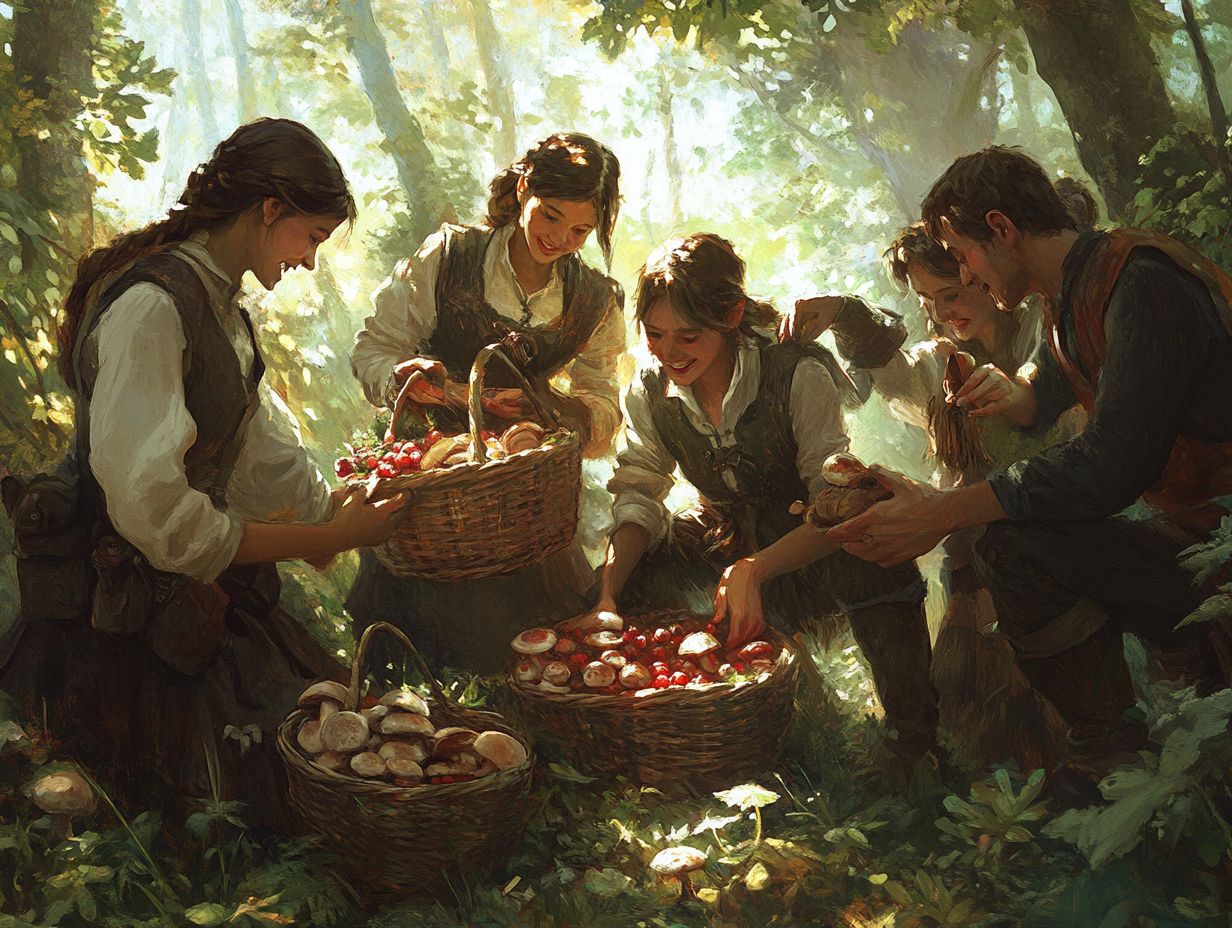
The environmental benefits of seasonal foraging are numerous. It significantly contributes to sustainable harvesting practices, ecological balance, and enhanced biodiversity in local ecosystems.
By actively seeking out and utilizing local edible plants, you play a crucial role in managing invasive species plants that harm local ecosystems that threaten native habitats. This practice not only curbs the spread of non-native plants but also deepens your understanding and appreciation of indigenous flora.
Engaging in community foraging efforts fosters a spirit of environmental activism. Individuals unite to emphasize the importance of supporting local ecosystems. This collective action strengthens community bonds and raises awareness of the essential role that native plants play in maintaining ecological health. Ultimately, it inspires a more sustainable approach to our environment.
How to Start Seasonal Foraging
Get ready for your exciting seasonal foraging adventure! Master the art of identifying edible plants and fruits while following essential safety guidelines for a rewarding and secure experience.
A comprehensive foraging guide will equip you with the knowledge about plants needed to differentiate between safe and toxic plants. This knowledge will enrich your appreciation for local ecosystems.
Whether you’re in urban environments or natural landscapes, a systematic approach will elevate your foraging skills.
Identifying Edible Plants and Fruits
Identifying edible plants and fruits is crucial in seasonal foraging. You need to develop a keen eye for local plants and a solid understanding of distinctive features.
To sharpen your plant identification skills, focus on visual characteristics like leaf shape, flower color, and growth patterns. For example, broadleaf plantain has broad, oval leaves and unique flower spikes, often found in disturbed soil or along trails.
Dandelions look like sunny yellow stars on the ground. They’re easy to spot in gardens or fields. Familiarizing yourself with these details enhances your identification skills and cultivates a deeper appreciation for diverse habitats.
Safety Guidelines
When you begin foraging for wild edible foods, following safety guidelines is vital. This helps you avoid the dangers posed by toxic plants and misidentifications.
Investing time in researching well-known plants enhances your experience and significantly reduces risks. While invasive species may seem appealing, they often have hidden dangers that threaten your safety and local ecosystems.
If you want to gather your own sustenance from nature, consult reliable field guides and connect with local experts. Their insights can be invaluable.
Participating in community workshops or online forums can also provide practical advice on seasonal foraging tips and ethical harvesting practices. Understanding these aspects of foraging will promote your safety and deepen your appreciation for the natural world.
Community Foraging Events
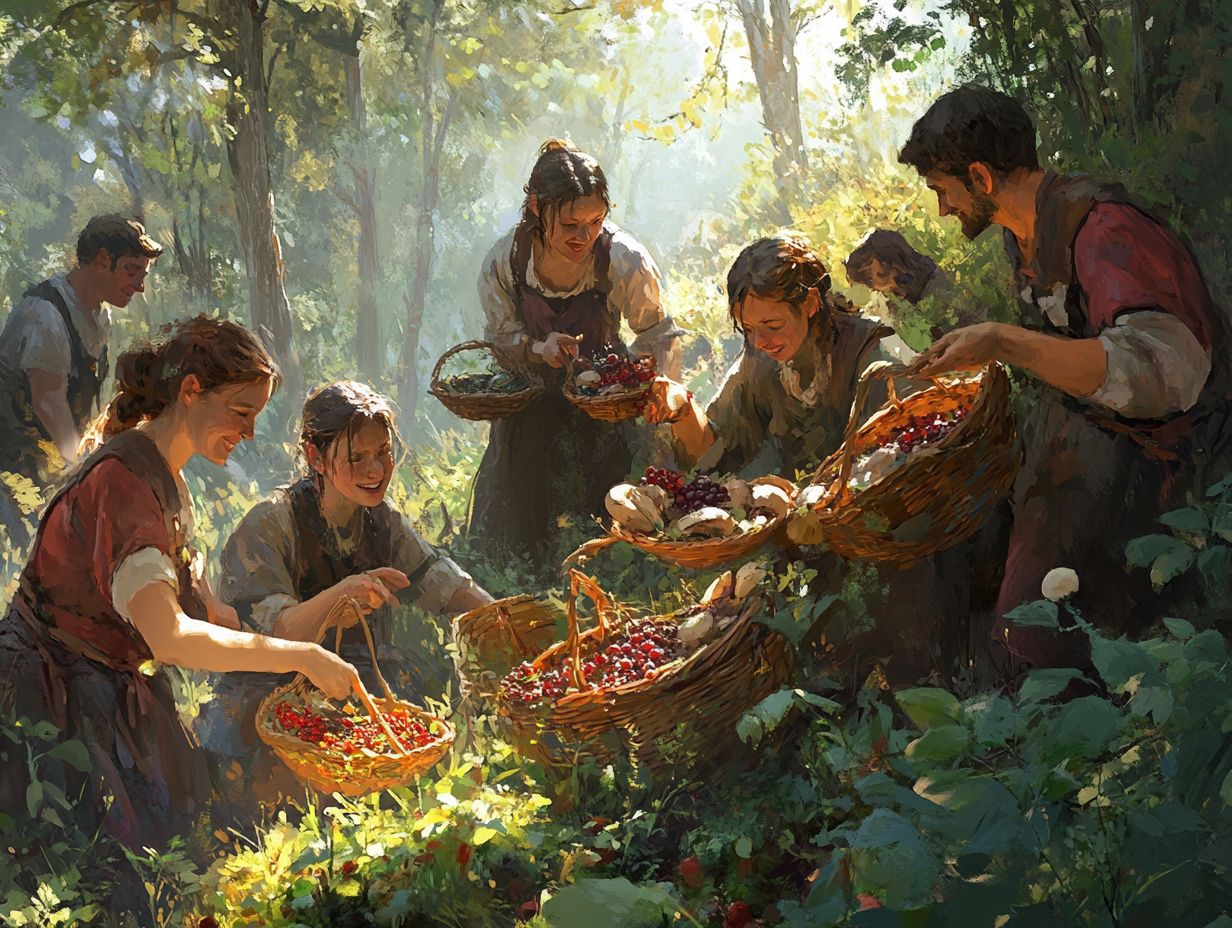
Community foraging events offer you a unique opportunity to connect with like-minded individuals who share your enthusiasm for wild edible foods. These gatherings are not just social occasions; they provide essential avenues for sharing knowledge and engaging in summer foraging experiences.
Connecting with Others and Sharing Knowledge
Connecting with others through community foraging events enriches your journey, offering a wealth of shared knowledge and experiences, especially when exploring the art of seasonal foraging.
By joining social media groups dedicated to foraging, you can connect with individuals who are passionate about sustainable practices. Local organizations often host workshops and guided foraging tours, providing opportunities to learn firsthand about local plants.
These interactions sharpen your practical skills and foster environmental stewardship, nurturing a deep sense of responsibility and appreciation for nature. Share your successes and challenges within these communities to inspire fellow foragers and enhance your understanding of the ecosystem.
Incorporating Foraged Foods into Your Diet
Incorporating foraged foods into your diet elevates your culinary repertoire and offers nutritional advantages.
This practice enriches your meals with distinctive flavors and textures, turning each dish into a delightful exploration of nature s bounty. Don’t wait! Join a local foraging group today and discover the delicious plants waiting for you!
Recipes and Cooking Tips
Creating delicious meals with foraged foods can be a rewarding experience. Incorporating ingredients like plantain leaves and Reishi mushrooms adds a unique twist to your cooking.
These wild edibles bring distinctive flavors and textures to your dishes. They also enhance their nutritional value.
Picture this: a vibrant stir-fry with fresh plantain leaves and earthy Reishi mushrooms. This dish offers beneficial properties as well.
By embracing new cooking ideas and experimenting with seasonal finds, you invite creativity into your kitchen. This transforms simple ingredients into gourmet delights.
Techniques like drying and fermenting these foraged treasures create exciting new dishes that celebrate nature’s bounty while showcasing your individual style.
Frequently Asked Questions
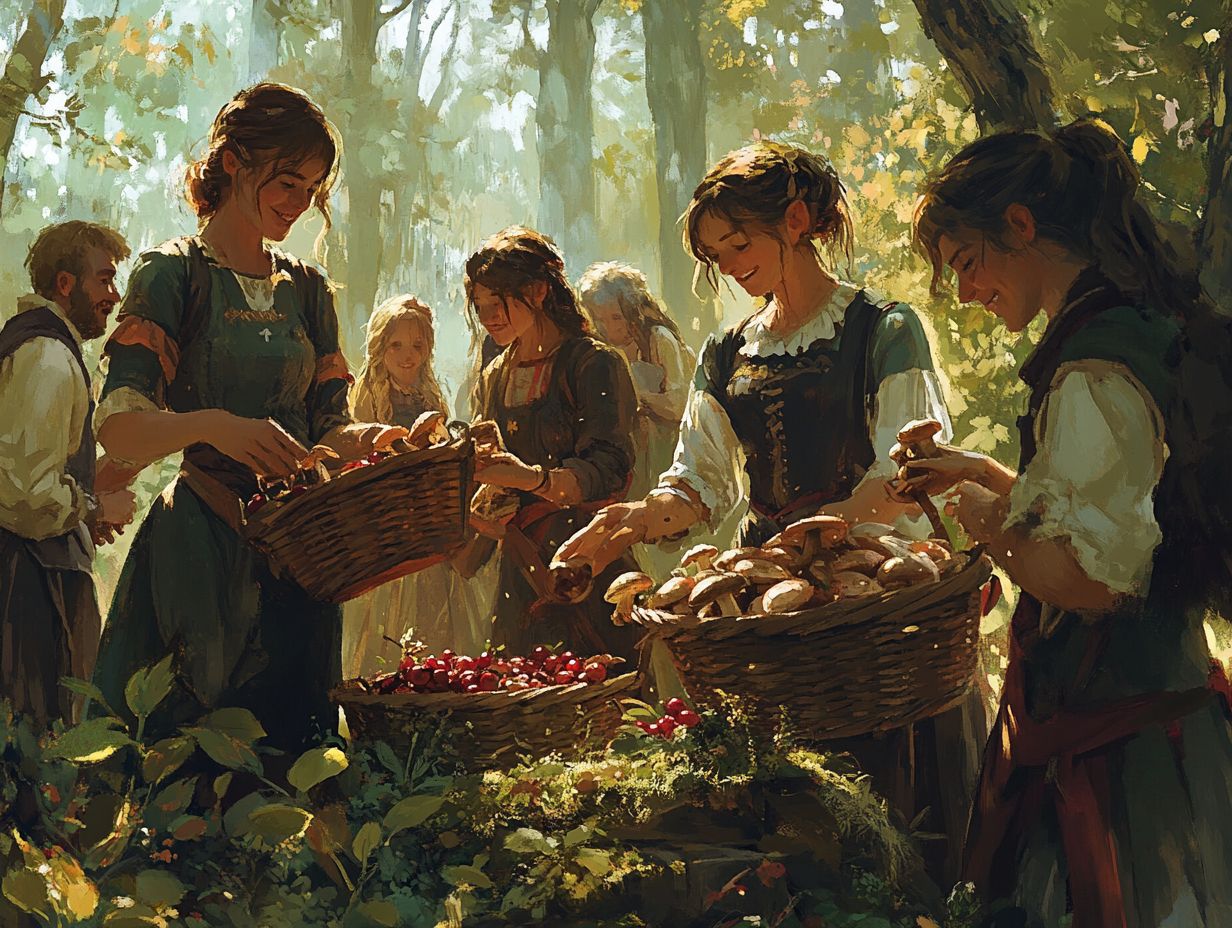
What is seasonal foraging and how does it relate to local flora?
Seasonal foraging is the practice of gathering wild edible plants, fruits, nuts, and mushrooms during their peak season of availability. For those interested, knowing what to know about seasonal foraging in your area can enhance the experience and involves connecting with nature while utilizing the resources it provides.
How can I learn about seasonal foraging?
There are many ways to learn about seasonal foraging. You can join a local foraging group, attend workshops or classes, read books and online resources, and talk to experienced foragers in your community.
Is it safe to forage for wild plants?
Foraging can be safe as long as proper precautions are taken. It is important to correctly identify plants and mushrooms before consuming them and to forage in areas that are free from pollutants and pesticides.
Consulting with an expert before trying a new plant or mushroom is also recommended.
How does seasonal foraging benefit the environment?
Seasonal foraging promotes sustainable and eco-friendly practices. By following a seasonal guide foraging through the year, it reduces the need for mass-produced, commercially grown food and helps maintain the biodiversity of local ecosystems.
This practice also supports pollinators and other wildlife.
Can I forage in urban areas?
Yes, it is possible to forage in urban areas. Just follow local regulations and obtain permission from property owners.
You might also consider joining a community garden or urban foraging group to learn about safe and sustainable foraging practices in urban environments.
How does foraging connect with nature and community?
Foraging allows people to connect with nature by appreciating and learning about the plants and other natural resources surrounding them. Understanding seasonal foraging highlights why timing matters and creates a sense of community as people come together to share knowledge, resources, and the bounty of their foraging trips.

![Top Local Edibles to Forage in [Your Area]](https://forageadept.com/wp-content/uploads/2024/08/top-local-edibles-to-forage-in-your-area-1X-768x578.jpeg)
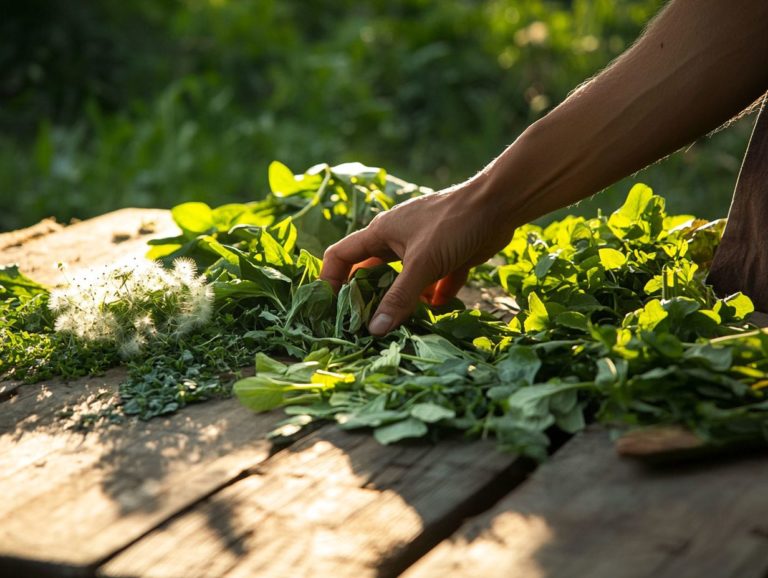
![Top 5 Foraging Locations in [Your Area] This Winter](https://forageadept.com/wp-content/uploads/2024/08/top-5-foraging-locations-in-your-area-this-winter-7a-768x578.jpeg)
